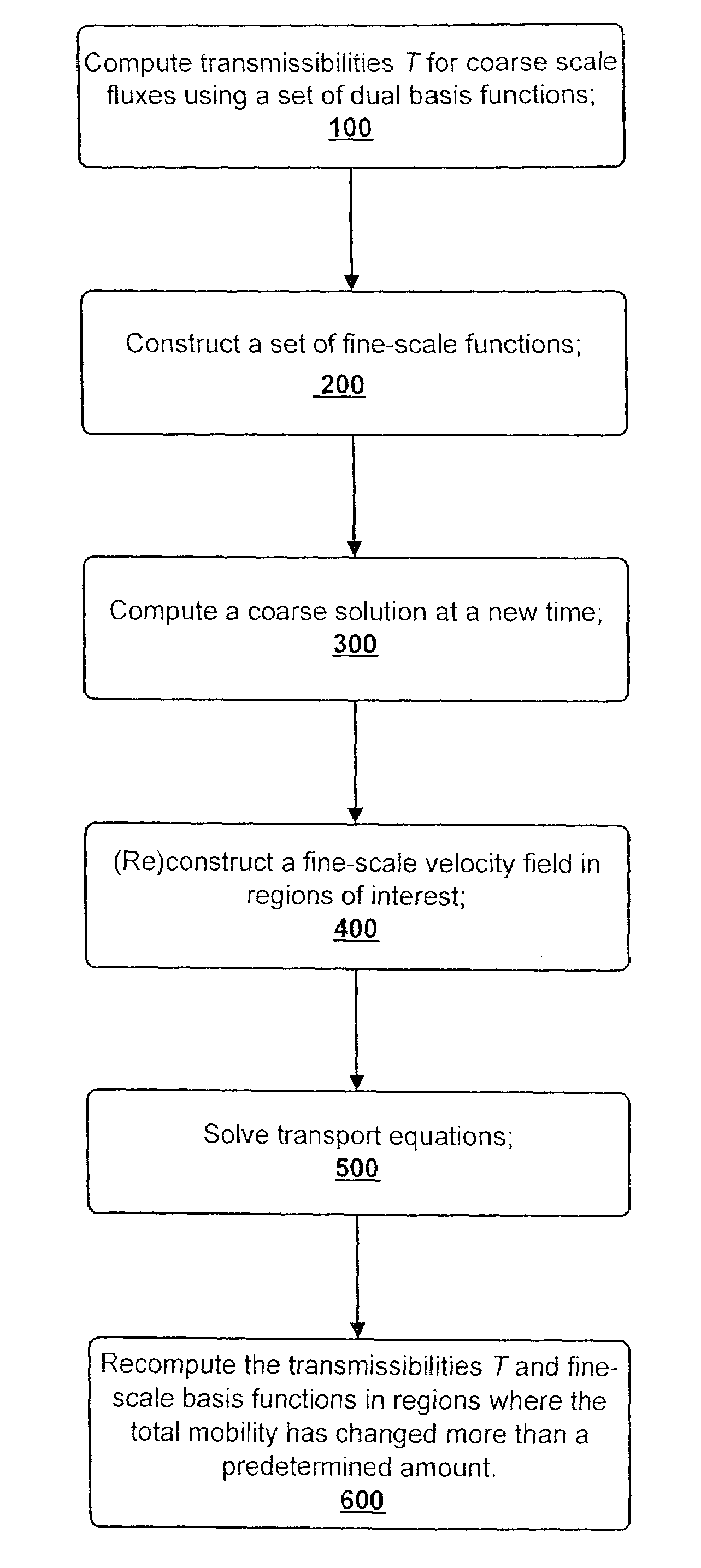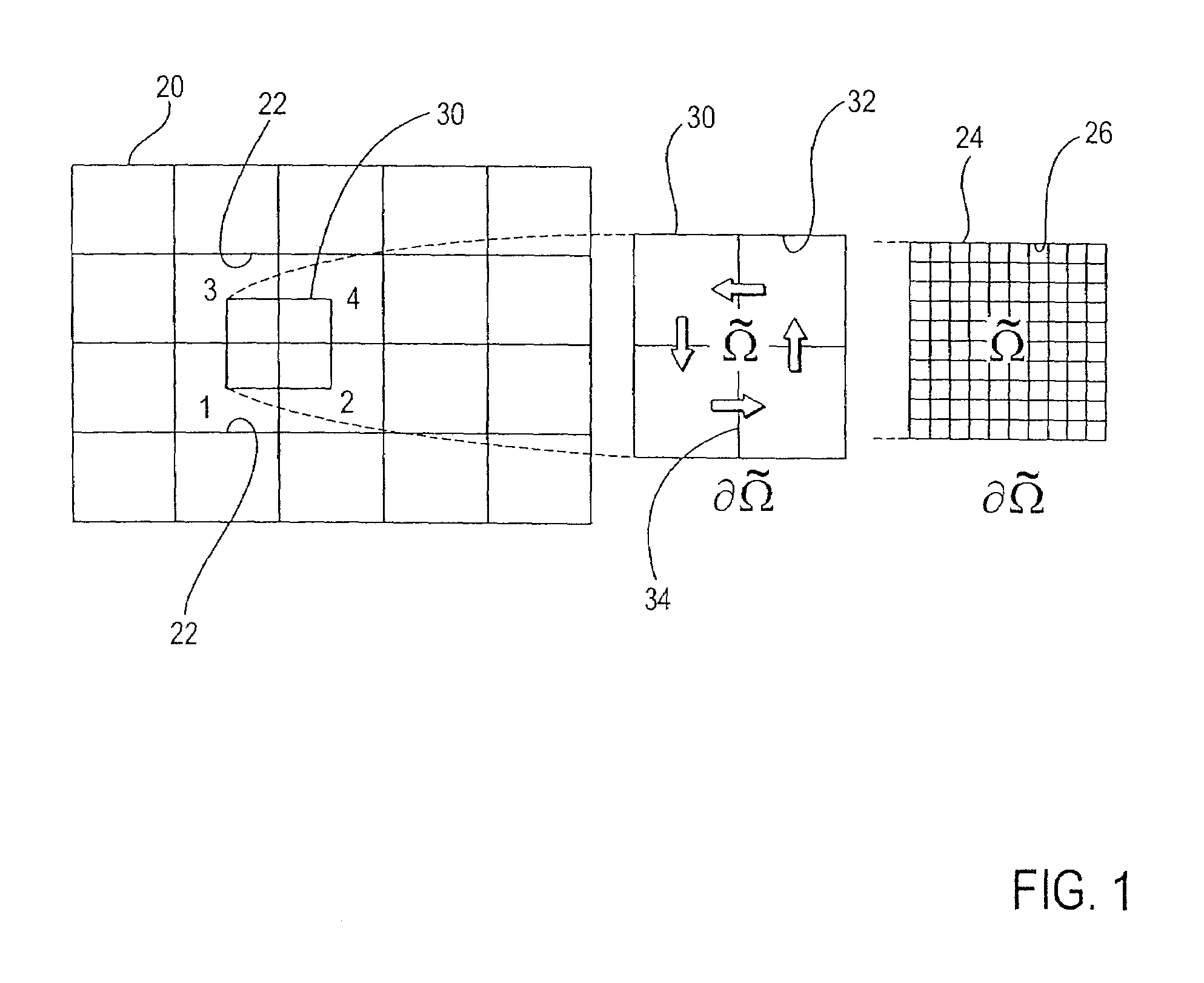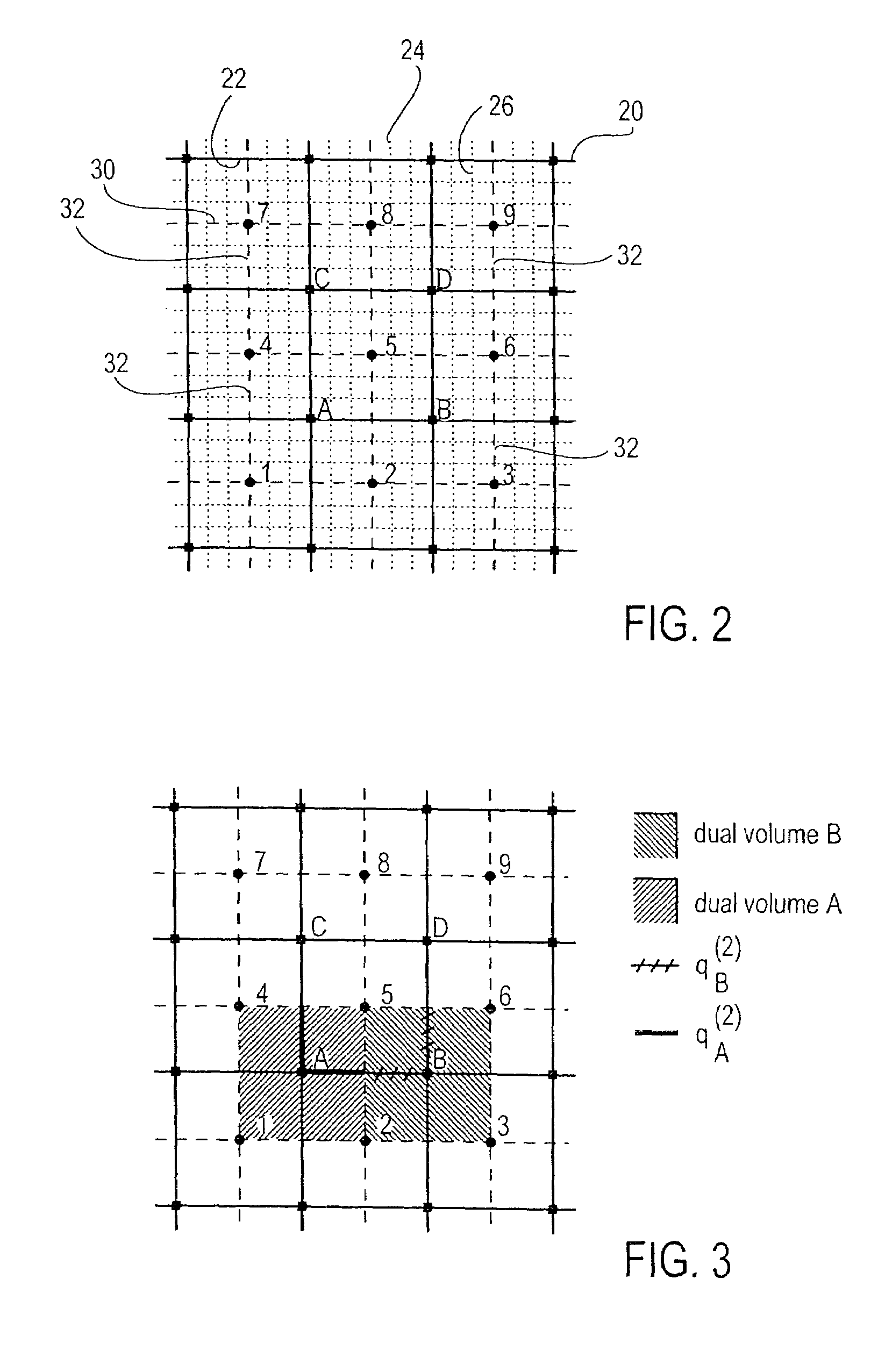Multi-scale finite-volume method for use in subsurface flow simulation
a reservoir simulator and multi-scale technology, applied in the field of subsurface reservoir simulators, can solve the problems of not being able to have a prior estimate of the errors that are present, and the level of detail available in reservoir descriptions often exceeds the computational capability of existing reservoir simulators
- Summary
- Abstract
- Description
- Claims
- Application Information
AI Technical Summary
Benefits of technology
Problems solved by technology
Method used
Image
Examples
Embodiment Construction
I. Flow Problem
A. One Phase Flow
[0031]Fluid flow in a porous media can be described by the elliptic problem:
∇·(λ·∇p)=f on Ω (1)
where p is the pressure, λ is the mobility coefficient (permeability, K, divided by fluid viscosity, μ) and Ω is a volume or region of a subsurface which is to be simulated. A source term f represents wells, and in the compressible case, time derivatives. Permeability heterogeneity is a dominant factor in dictating the flow behavior in natural porous formations. The heterogeneity of permeability K is usually represented as a complex multi-scale function of space. Moreover, permeability K tends to be a highly discontinuous full tensor. Resolving the spatial correlation structures and capturing the variability of permeability requires a highly detailed reservoir description.
[0032]The velocity u of fluid flow is related to the pressure field through Darcy's law:
u=−λ·∇p. (2)
[0033]On the boundary of a volume, ∂Ω, the flux q=u·ν is specified, where ν is the boun...
PUM
 Login to View More
Login to View More Abstract
Description
Claims
Application Information
 Login to View More
Login to View More - R&D
- Intellectual Property
- Life Sciences
- Materials
- Tech Scout
- Unparalleled Data Quality
- Higher Quality Content
- 60% Fewer Hallucinations
Browse by: Latest US Patents, China's latest patents, Technical Efficacy Thesaurus, Application Domain, Technology Topic, Popular Technical Reports.
© 2025 PatSnap. All rights reserved.Legal|Privacy policy|Modern Slavery Act Transparency Statement|Sitemap|About US| Contact US: help@patsnap.com



